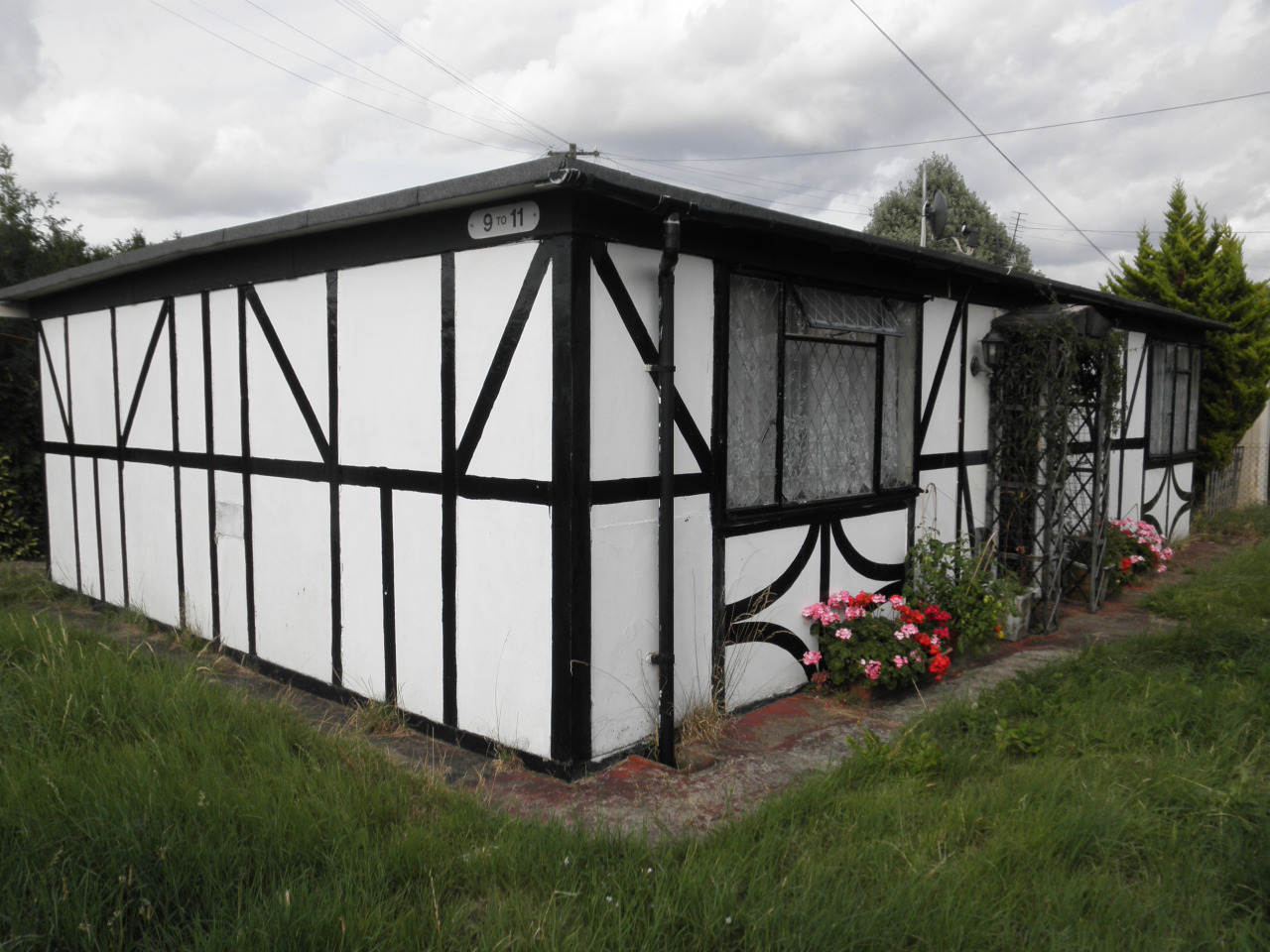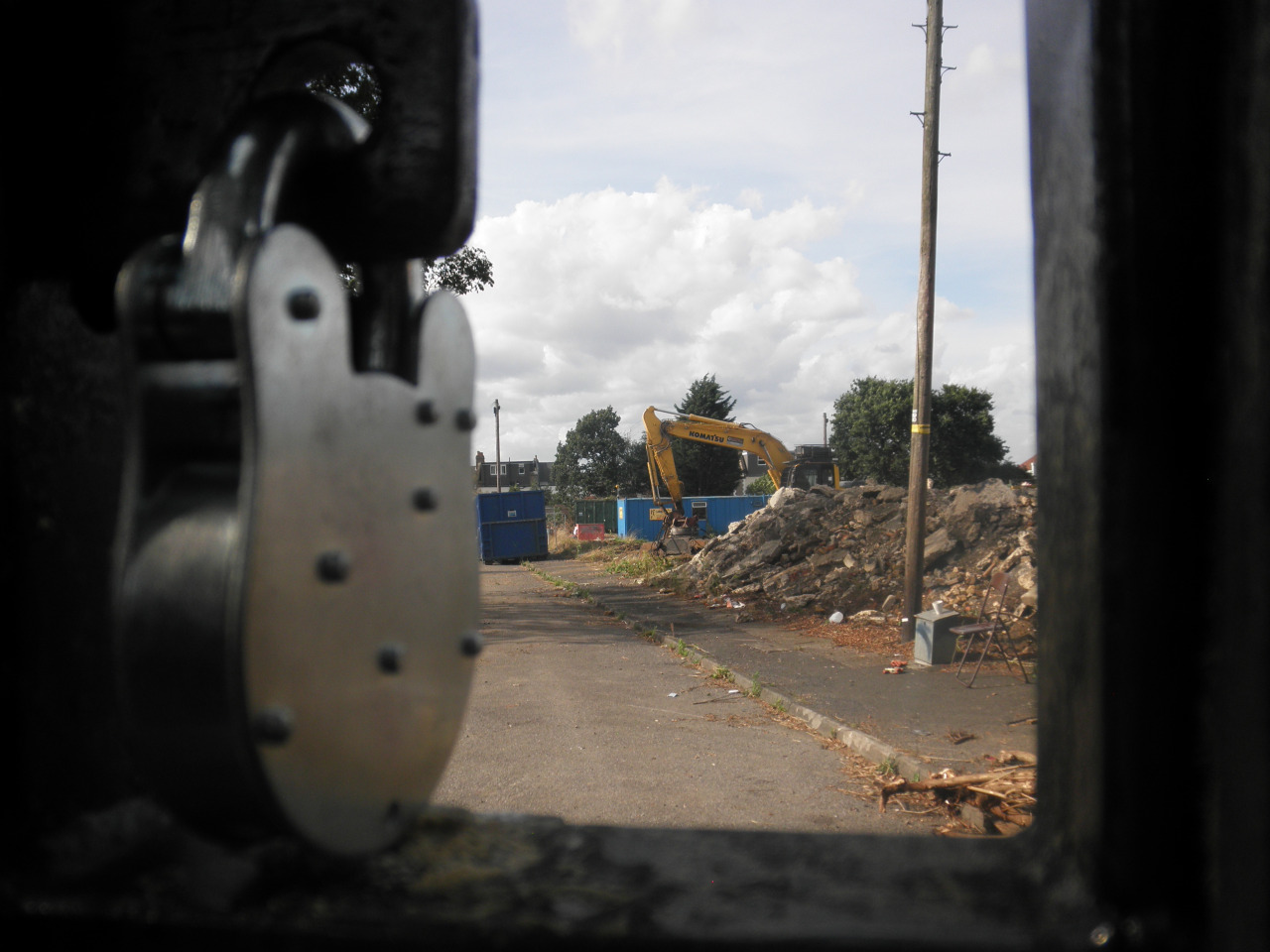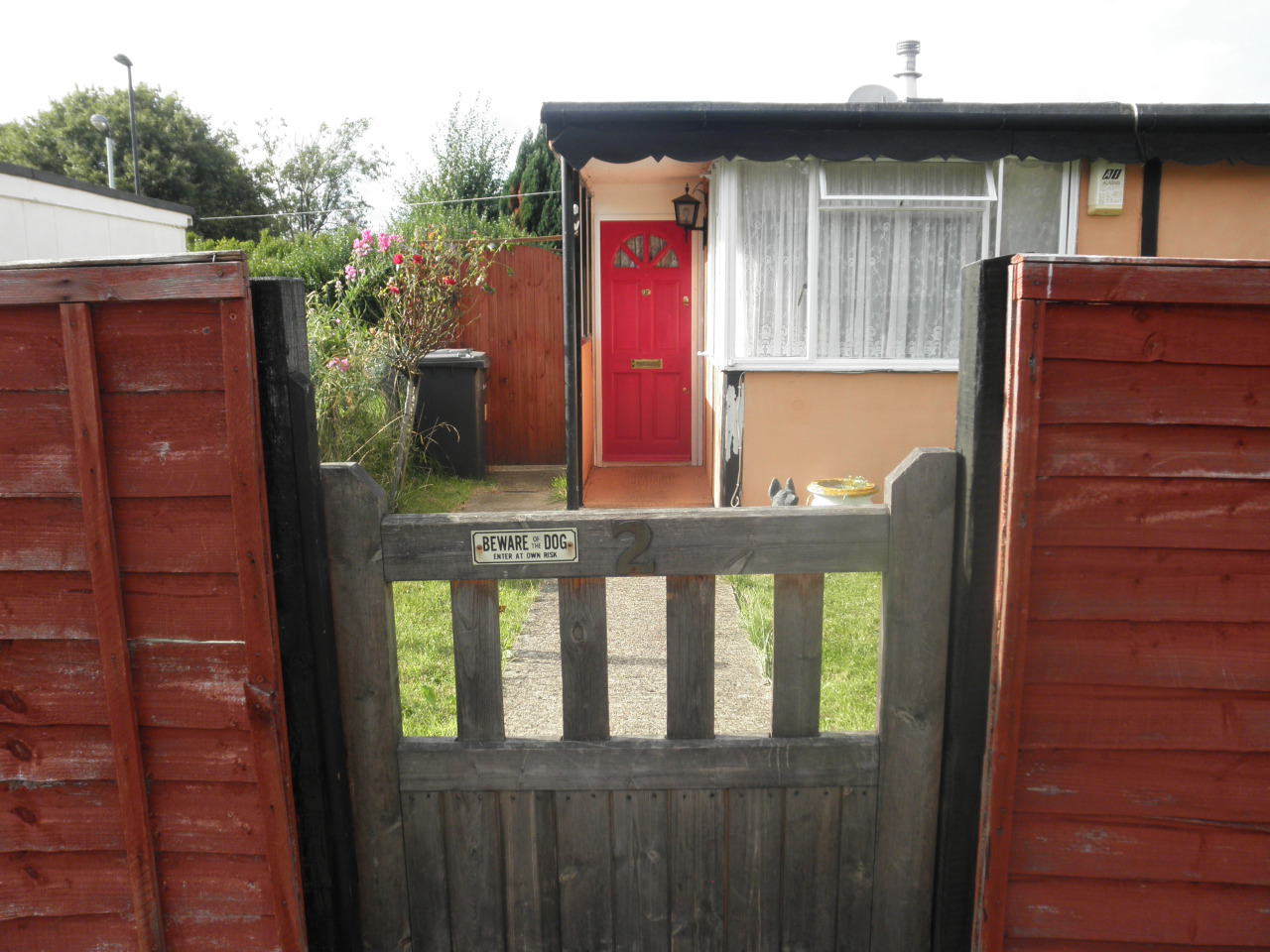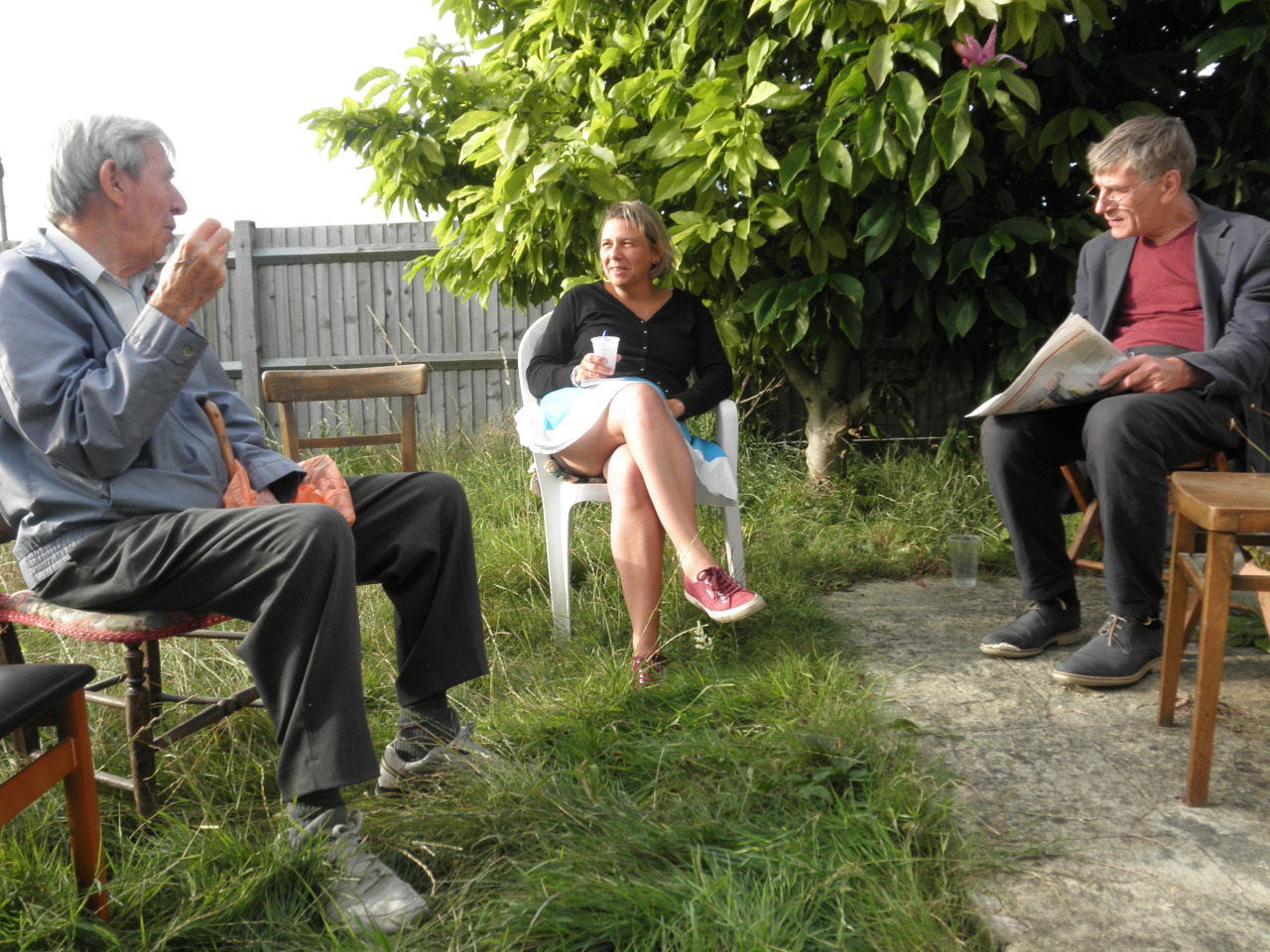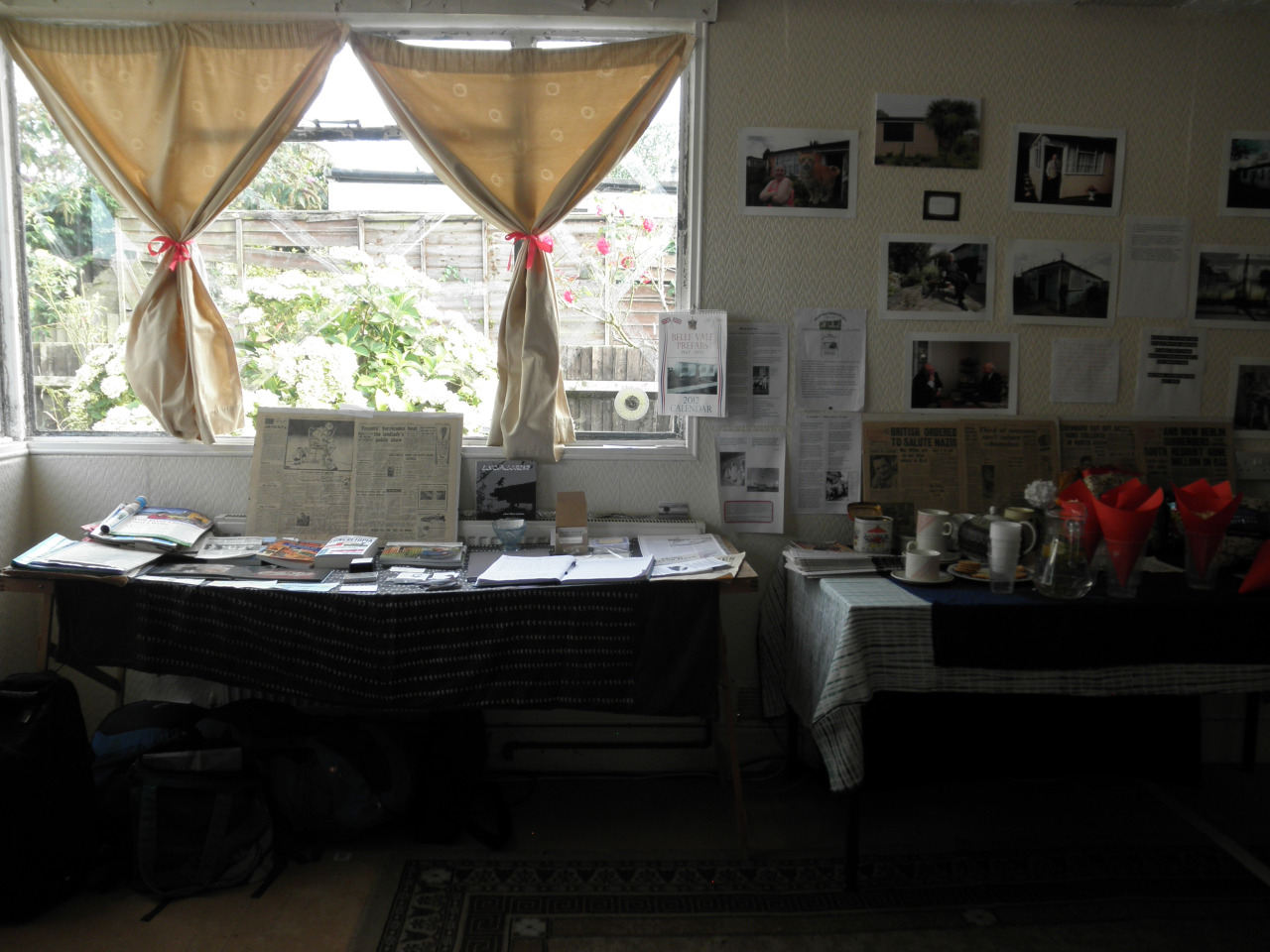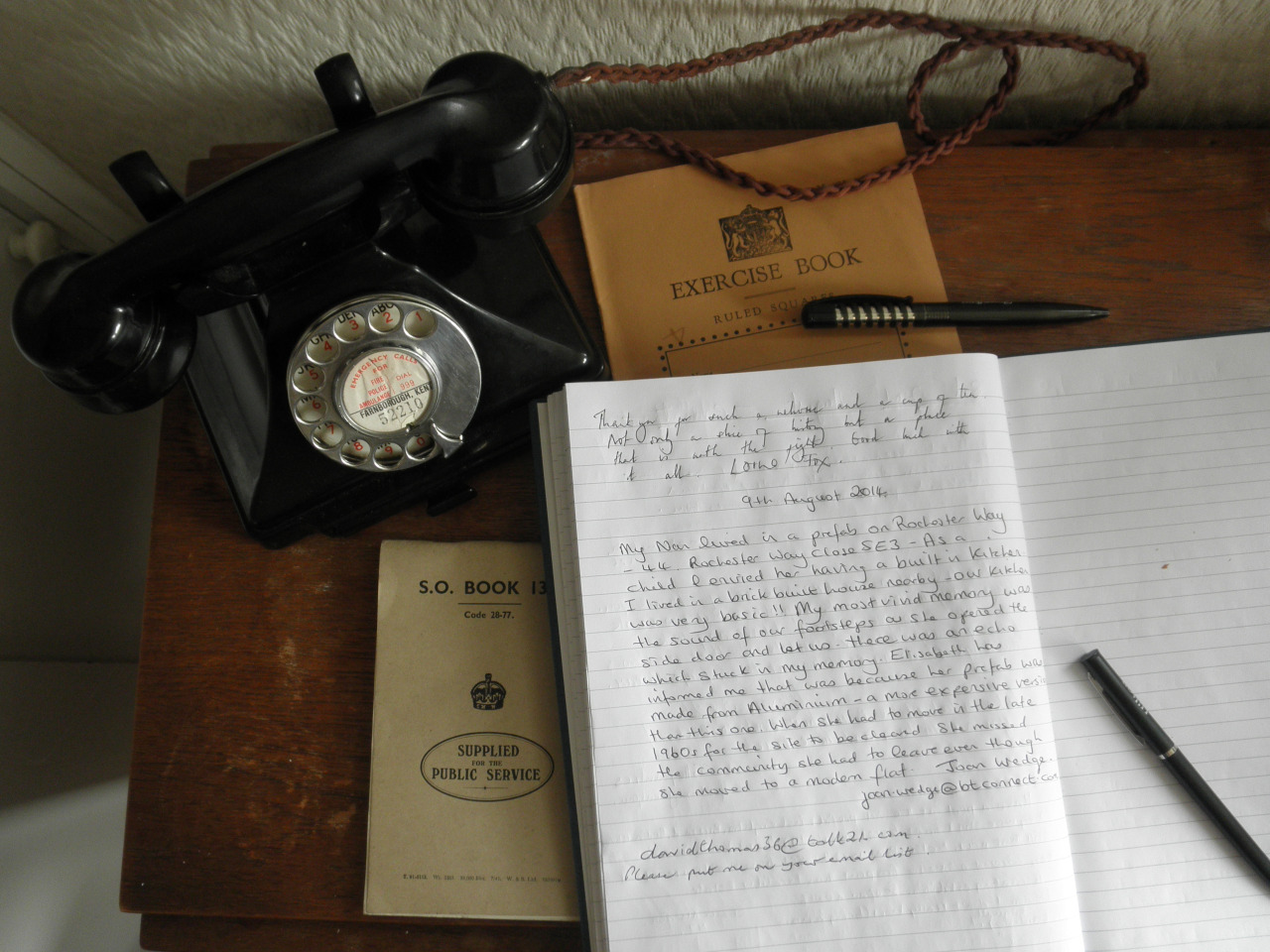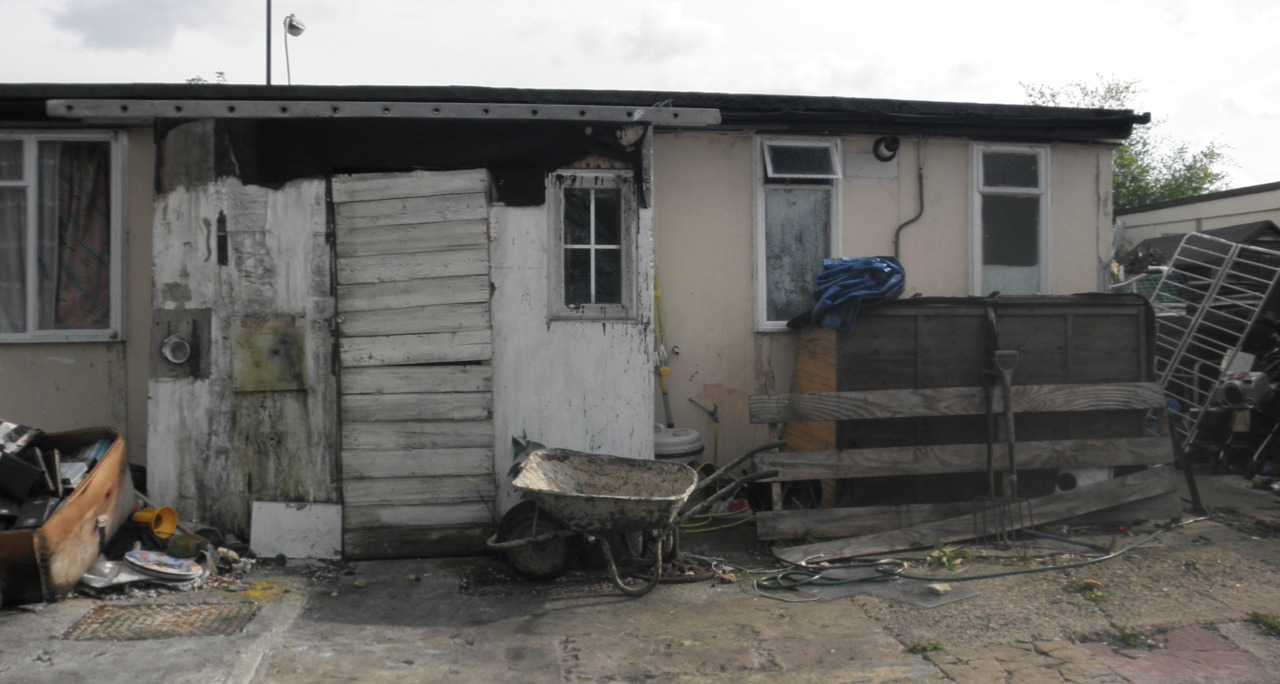The homes of the rich and the famous get the most money and attention in preserving “our” history. But as beautiful as places like Chatsworth (Mr. Darcy’s house) are, they represent the lifestyle of the 1%. The history of the poor, of the other 99%, is often more fragile and easily devalued and lost.
These pre-frabicated houses, and the effort to save them, show how beautiful and complex the stories of the ordinary life can be and the challenges faced when people at the grassroots level attempt to save them.
The Prefabs are low-income, government housing built in the 40′s by German POW’s
for returning WWII veterans and their families in the suburbs of London. Yah. Take a minute to re-read that whole sentence and soak it in. Picture a London decimated by bombing, struggling to provide housing for families beginning to reunite after being torn apart by a long and arduous war. And Germans, utterly defeated for the second time in thirty years, held prisoner in a foreign land, being used to help in this rebuilding effort.
It was supposed to be temporary housing. But they stuck. And more than fifty years later people are now fighting to make them permanent. As the pictures show, some are deteriorating and some have been looked after with intense care. A handful are still being lived in by the original tenants. But they and their history are at risk of being torn down for more concentrated and modern apartment complexes. Elisabeth Blanchet and a handful of volunteers (including Bernard) had worked to photograph and preserve the oral histories of the current tenants, searched through archives to generate a more complete Prefab history, worked to unite a current WWII vet tenant and a German POW who had built his house, and had opened a museum in one of the Prefabs to bring this story to the community and world.
My encounter with Elisabeth Blanchet and Bernard and the rest of the volunteers during their appreciation party was a casual gathering complete with sipping tea in the backyard and watching Rear Window off of a projector in one of the emptied bedrooms. The atmosphere was hopeful: instead of being shut down for demolition in a few months, they had been promised a couple more years of time. Time desperately needed to raise money, get the word out, and continue the preservation of a story that was being forgotten as those who saw it first hand passed away.
[Update: Unfortunately, I’m writing this blog entry rather late. I went to look up the current status of the Prefabs and just months after my visit a small fire hit the Prefab museum, followed by mounds of red tape sadly preventing a re-opening.
Prefab museum website: http://www.prefabmuseum.uk/
Kickstarter with the latest updates: https://www.kickstarter.com/projects/1413215915/the-prefab-museum ]

